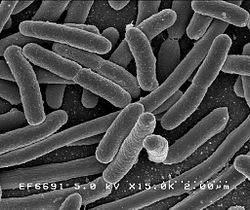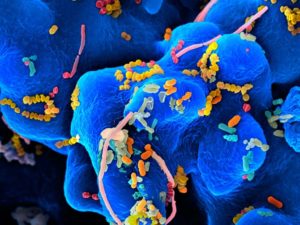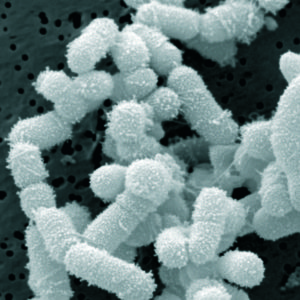 The following is an excellent commentary by Dr. John Mandrola regarding an important British Medical Journal article that I posted about earlier (see Rethinking Cancer Screening). He has a highly regarded web-site and also frequently posts on Medscape. His view is that cancer screening "may be one of Medicine’s largest reversals. A reversal happens when something (testing or treatment) doctors did, and patients accepted, turned out to be non-beneficial." (www.drjohnm.org)
The following is an excellent commentary by Dr. John Mandrola regarding an important British Medical Journal article that I posted about earlier (see Rethinking Cancer Screening). He has a highly regarded web-site and also frequently posts on Medscape. His view is that cancer screening "may be one of Medicine’s largest reversals. A reversal happens when something (testing or treatment) doctors did, and patients accepted, turned out to be non-beneficial." (www.drjohnm.org)
I can't overstate how big a reversal this is in medicine - it's huge, a paradigm change in the making. The reason for this is that studies show that overall death rates are basically the same in screened vs non-screened for mammography, colon, prostate, and lung cancer screening. This means our view of how cancer grows and spreads may have to be reexamined and changed. One possibility suggested by Dr. H. Gilbert Welch is that aggressive cancer is already "a systemic disease by the time it's detectable" (Oct. 28, 2015 post). From Medscape:
In Cancer Screening, Why Not Tell the Truth?
The problem: cancer screening has not worked. Recent reviews of the evidence show that current-day screening techniques do not save lives. Worse, in many cases, these good-intentioned searches bring harm to previously healthy people.
I realize this sounds shocking. It did to me, too. Millions of women and men have had their breasts squished, veins poked, lungs irradiated, and bowels invaded in the name of "health" maintenance. I've been scolded for forgoing PSA tests and colonoscopy — "you should know better, John."....Anecdotes, however compelling, are not evidence. When you pull up a chair, open your computer, take a breath, suspend past beliefs, and look for the evidence that screening saves lives, it simply isn't there.
One reason that this many people (doctors and patients alike) have been misled about screening has been our collective attachment to the belief that if screening lowers disease-specific death rates, that would translate to lower overall mortality. That is: breast, lung, and colon cancer are bad diseases, so it makes sense that lowering death from those three types of cancer would extend life. It is not so.
In a comprehensive review of the literature[1] published in the BMJ, Drs Vinay Prasad (Oregon Health Sciences University, Portland) and David Newman (School of Medicine at Mount Sinai, New York), along with journalist Jeanne Lenzer, find that disease-specific mortality is a lousy surrogate for overall mortality. They report that when a screening technique does lower disease-specific death rates, which is both uncommon and of modest degree, there are no differences in overall mortality.
The authors cite three reasons why cancer screening might not reduce overall mortality:
- Screening trials were underpowered to detect differences. I'm no statistician, but doesn't the fact that a trial requires millions of subjects to show a difference, mean there is little, if any, difference?
- "Downstream effects of screening may negate any disease-specific gains." My translation: harm. Dr Peter Gøtzsche (Nordic Cochrane Center, Copenhagen) wrote in a commentary[2] that "screening always causes harm. Sometimes it also leads to benefits, and sometimes these benefits outweigh the harms." To understand harm resulting from screening, one need only to consider that a prostate biopsy entails sticking a needle through the rectum, or that some drugs used to treat breast cancer damage the heart.
- Screening might not reduce overall mortality because of "off-target deaths." An illustration of this point is provided by a cohort study[3]that found a possible increased risk of suicide and cardiovascular death in men in the year after being diagnosed with prostate cancer. People die — of all sorts of causes, not just cancer.
Let's also be clear that this one paper is not an outlier. A group of Stanford researchers performed a systematic review and meta-analyses[4] of randomized trials of screening tests for 19 diseases (39 tests) where mortality is a common outcome. They found reductions in disease-specific mortality were uncommon and reductions in overall mortality were rare or nonexistent.
Drs Archie Bleyer and H Gilbert Welch (St Charles Health System, Central Oregon, Portland) reviewed Surveillance, Epidemiology, and End Results (SEER) data from 1976 through 2008 and concluded that "screening mammography has only marginally reduced the rate at which women present with advanced cancer and that overdiagnosis may account for nearly a third of all new breast cancer cases."[5] Likewise, a Cochrane Database Systematic review[6] of eight trials and 600,000 women did not find an effect of screening on either breast cancer mortality or all-cause mortality. This evidence caused the Swiss medical board to abolish screening mammography.[7]
These are the data. It's now clear to me that mass cancer screening does not save lives. But I'm still trying to understand how this practice became entrenched as public-health gospel. It has to be more than fear. Dr Gerd Gigerenzer (Max Planck Institute, Berlin, Germany)...He pointed to language and the ability of words to persuade. Instead of saying "early detection," advocates might use the term "prevention." This, Dr Gigerenzer says, wrongly suggests screening reduces the odds of getting cancer. Doesn't looking for cancer increase the odds of getting the diagnosis of cancer?
Gigerenzer noted two other ways language is used to emphasize screening benefits over harms: -The reporting of benefits in relative, not absolute terms. - The equating of increases in 5-year survival rates with decreases in mortality. I would add to this list of word misuse, the practice of referring to women sent to mammography screening as patients. They are not patients; they are well people. Dr Gigerenzer agreed with the commonsense notion that overall mortality should be reported along with cancer-specific mortality. His editorial included a fact box on breast cancer early detection using mammography provided by the Harding Center for Risk Literacy. I challenge you to tell me why such text boxes should not be shown to people before they undergo screening,
The first action healthcare experts should take is to spread the word that there is nothing about the mass screening of healthy people for cancer that equates to health maintenance. Embrace clear language. Saying or implying that screening saves lives when there are no data to support it and lots to refute it undermines trust in the medical profession.
The second action healthcare experts should take is to stop wasting money on screening. If the evidence shows no difference in overall mortality, why pay for it? I'm not naive to the fact that use of clear language will decrease the number of billable procedures. I am not saying this will be easy. One first move that would be less painful would be to get rid of quality measures or incentives that promote screening.
I want to be clear; I'm not saying all cancer screening is worthless. People at higher baseline risk for cancer, such as those with a family history of cancer or environmental exposures, might derive more benefit than harm from screening. Prasad, Lenzer, and Newman say this group of patients would be a good place to spend future research dollars. That sounds reasonable. I also acknowledge that some people, even when presented with the evidence, will want to proceed with screening. We can argue about who should pay for non–evidence-based medical procedures.
![]() Last fall a study came out that estimated that annually about 3.3 million deaths throughout the world were caused from air pollution. But a study was presented Friday at the American Association for the Advancement of Science (AAAS) that gave a much higher estimate of annual air pollution deaths: 5.5 million. A horrifying number. And yet... governments, companies, and people resist measures to cut air pollution. Why? It costs money. And also many people are too poor (e.g., China and India) to use cleaner sources of heating and cooking fuel - so they are damaging their own health in their own homes. From Science Daily:
Last fall a study came out that estimated that annually about 3.3 million deaths throughout the world were caused from air pollution. But a study was presented Friday at the American Association for the Advancement of Science (AAAS) that gave a much higher estimate of annual air pollution deaths: 5.5 million. A horrifying number. And yet... governments, companies, and people resist measures to cut air pollution. Why? It costs money. And also many people are too poor (e.g., China and India) to use cleaner sources of heating and cooking fuel - so they are damaging their own health in their own homes. From Science Daily:
 Another famous long-running study (Framingham Heart Study) finds more bad news for middle-aged coach-potatoes (that is, those who don't exercise or have poor physical fitness). It's an observational study (thus they found an association), but the finding is pretty damn convincing: that poor physical fitness (basically a sedentary life-style) may be linked to a smaller brain size (brain volume) 20 years later. The reason this is significant is because shrinking brain volume means that accelerated brain aging is occurring.
Another famous long-running study (Framingham Heart Study) finds more bad news for middle-aged coach-potatoes (that is, those who don't exercise or have poor physical fitness). It's an observational study (thus they found an association), but the finding is pretty damn convincing: that poor physical fitness (basically a sedentary life-style) may be linked to a smaller brain size (brain volume) 20 years later. The reason this is significant is because shrinking brain volume means that accelerated brain aging is occurring. The following is an excellent commentary by Dr. John Mandrola regarding an important British Medical Journal article that I posted about earlier (see
The following is an excellent commentary by Dr. John Mandrola regarding an important British Medical Journal article that I posted about earlier (see  A recent study has examined the issue of whether the 10 to 1 ratio of bacteria to human cells, which is widely quoted, is actually correct. Weizmann Institute of Science researchers currently feel that based on scientific evidence (which of course will change over time) and making "educated estimates", the actual ratio is closer to 1:1 (but overall there still are more bacterial than human cells). They point out that the 10:1 ratio was originally a "back of the envelope" estimate dating back to 1972.
A recent study has examined the issue of whether the 10 to 1 ratio of bacteria to human cells, which is widely quoted, is actually correct. Weizmann Institute of Science researchers currently feel that based on scientific evidence (which of course will change over time) and making "educated estimates", the actual ratio is closer to 1:1 (but overall there still are more bacterial than human cells). They point out that the 10:1 ratio was originally a "back of the envelope" estimate dating back to 1972. Now and then I hear people wondering whether the many hours we spend staring at computer, cell phone, and tablet screens is damaging our eyes. And what about fluorescent lighting (which seems to bother many people) and LED lights? After all, the blue light of all our device screens seems intense, and researchers have long known that blue light is toxic to the retina.
Now and then I hear people wondering whether the many hours we spend staring at computer, cell phone, and tablet screens is damaging our eyes. And what about fluorescent lighting (which seems to bother many people) and LED lights? After all, the blue light of all our device screens seems intense, and researchers have long known that blue light is toxic to the retina. This study is noteworthy and relevant to humans (it was done on mice) because it may explain why so many people taking antibiotics get frequent viruses or seem more susceptible to infections. Once bacteria (both good and bad) are killed by antibiotics, then the community becomes unbalanced (dysbiosis), so that viruses may gain a foothold and a viral infection develops. In a healthy microbial community all sorts of microbes can be found, even ones we typically consider pathogenic, but the whole community keeps them in balance. One can say that "depletion of commensal microbiota also affects antiviral immunity".
This study is noteworthy and relevant to humans (it was done on mice) because it may explain why so many people taking antibiotics get frequent viruses or seem more susceptible to infections. Once bacteria (both good and bad) are killed by antibiotics, then the community becomes unbalanced (dysbiosis), so that viruses may gain a foothold and a viral infection develops. In a healthy microbial community all sorts of microbes can be found, even ones we typically consider pathogenic, but the whole community keeps them in balance. One can say that "depletion of commensal microbiota also affects antiviral immunity". Once again, research shows that "BPA-free" plastic does not mean it is safer than BPA plastic. Both BPA and BPS (the usual replacement for BPA) leach estrogenic chemicals into the foods and beverages, which means negative health effects when ingested. Both BPA and BPS mimic the effects of estrogen, as well as the actions of thyroid hormone. Yes, this study was done on zebrafish, but think of them as "the canaries in the mine" - if it affects them, it could affect humans also, especially developing fetuses and young children.
Once again, research shows that "BPA-free" plastic does not mean it is safer than BPA plastic. Both BPA and BPS (the usual replacement for BPA) leach estrogenic chemicals into the foods and beverages, which means negative health effects when ingested. Both BPA and BPS mimic the effects of estrogen, as well as the actions of thyroid hormone. Yes, this study was done on zebrafish, but think of them as "the canaries in the mine" - if it affects them, it could affect humans also, especially developing fetuses and young children. I posted about this amazing research while it was still ongoing (
I posted about this amazing research while it was still ongoing ( It's now 3 years being free of chronic sinusitis and off all antibiotics! Three amazing years since I started using easy do-it-yourself sinusitis treatments containing the probiotic (beneficial bacteria) Lactobacillus sakei. My sinuses feel great! And yes, it still feels miraculous.
It's now 3 years being free of chronic sinusitis and off all antibiotics! Three amazing years since I started using easy do-it-yourself sinusitis treatments containing the probiotic (beneficial bacteria) Lactobacillus sakei. My sinuses feel great! And yes, it still feels miraculous.